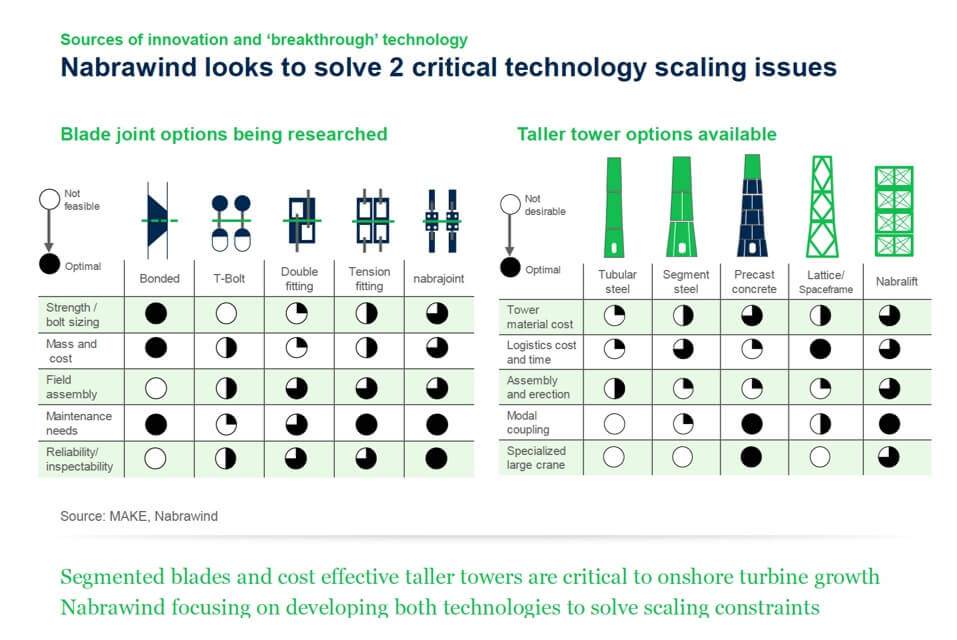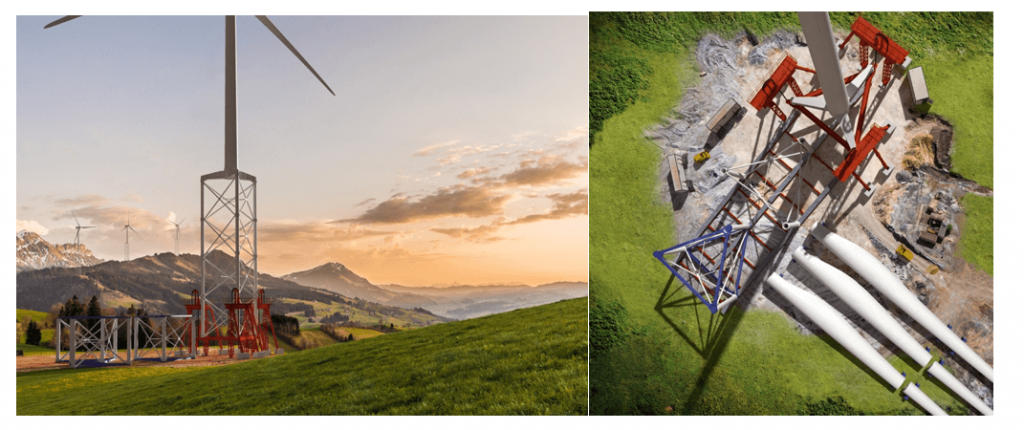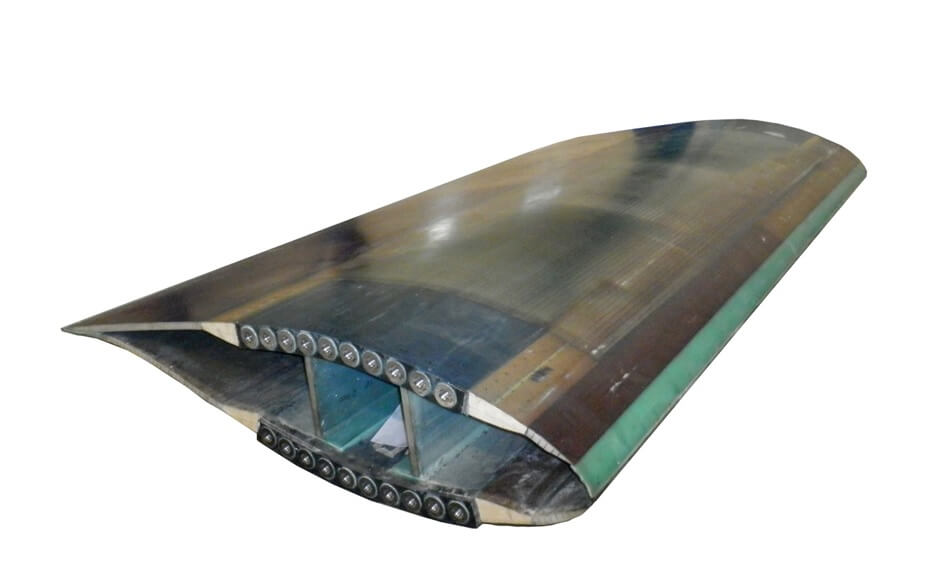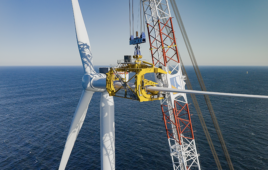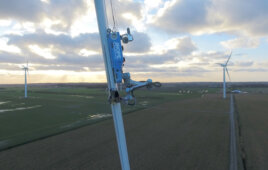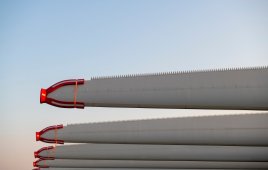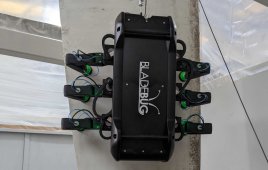Nabrawind Technologies was founded in 2015 by veterans of the renewable industry with decades of experience in development of innovative technologies. The team currently consists of 20 engineers, who have spent the last 20 years working with the major global manufacturers of wind turbines.
The headquarters of Nabrawind is located in Pamplona (Spain), one of the most favorable locations for the development of wind turbine technology, due to the local presence of other major renewable companies that cover the whole value chain, including collaborators and first-class validation infrastructure.
The company strategy is based on the development of innovative solutions directed toward the drastic reduction of the cost of energy, always using proven technologies in renewable or other industries.
Because of the latest trends in the development of the last generation wind turbine generators announced by the leading OEMs, which will shift wind turbines to rotor diameters of 150m and total heights above 240m, the transport and installation of these massive blades and towers becomes the next big challenge in the renewable energy industry.
In response to this, Nabrawind has developed two solutions to break these logistic and installation barriers of the two most important components (both in size and cost) of the wind turbine generator: the self-erecting tower Nabralift and the joint of modular blades Nabrajoint.
The potential of these solutions has been noted by major experts in the market. MAKE Consulting, leading consultants in the wind energy sector published an analysis comparing the different options for joints of modular blades or XXL towers in their report “Global Wind Turbines 2016”, published on 27th December 2016. Nabralift and Nabrajoint were identified in that report as the best alternatives in their respective fields, describing them as “technologies capable of revolutionizing the wind energy industry”.
Evaluation of Nabrawind technologies by MAKE Consulting: 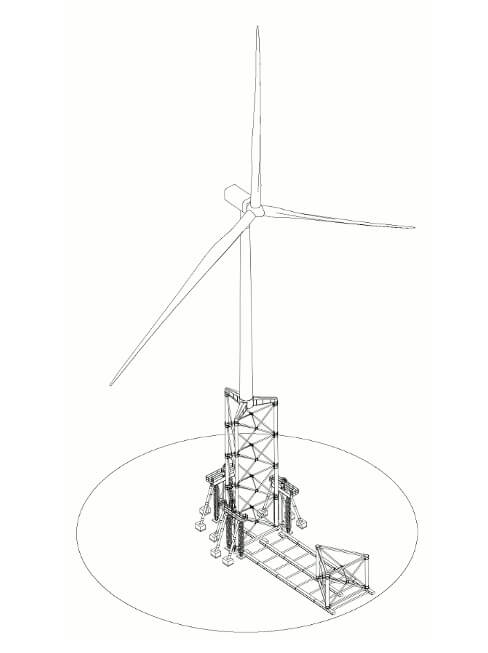
Nabralift, the crane-less self-erecting tower
Towers with heights in excess of 120m are now a reality in all markets, reaching heights up to 165m in the European market. In 2016, more than 2GW of towers of more than 120m were installed and it is expected this will grow to more than 10GW a year within 5-10 years (more than 15% of the total wind energy market). In fact, all major producers of wind turbine generators have included towers with heights beyond 160m in their catalogs.
However, the challenges of these large-scale towers are limiting its installation in many cases: exponential increase in cost, difficulties with transport and/or logistics design constraints, scarce availability and high mobilisation and rental costs of cranes, increased time required for the installation of the wind farm and lastly an increase in the tower slenderness that complicates the compatibility between the tower stiffness and the rotor speed.
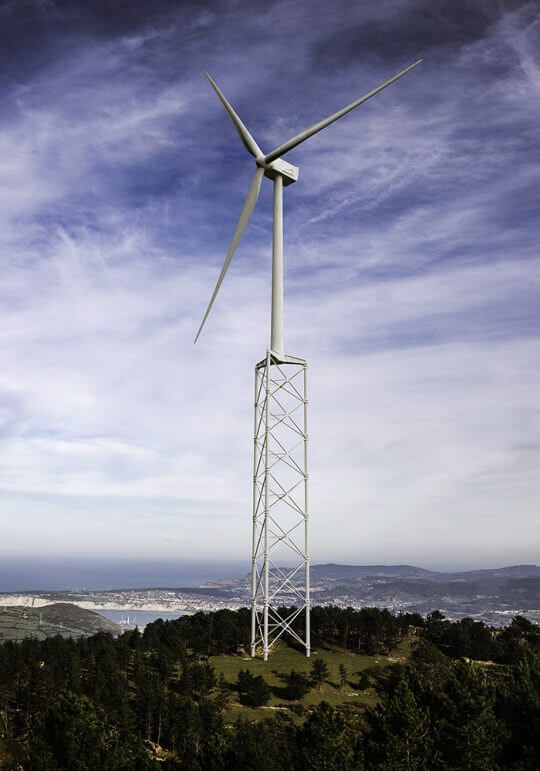 For several years there have been a variety of proposed alternatives to solve one or another of these problems. However, no solution has been able to solve all problems at once like Nabralift.
For several years there have been a variety of proposed alternatives to solve one or another of these problems. However, no solution has been able to solve all problems at once like Nabralift.
The new self-erecting tower developed by Nabrawind consists of two different parts. The upper part of the tower, with a length equal to that of the blade, is a tubular steel tower, which is a conventional technology that is widely recognized and very competitive if the aforementioned barriers didn’t exist. In the lower part, Nabrawind includes a structure with three main columns of approximately one-meter diameter, connected diagonally, providing the required torsional and shear rigidity. These columns have a distance between each other between 14 and 18m, which achieves a large stiffness and a significant weights and costs reduction from other tower solutions.
Its straight profile and constant distance between the tower columns simplifies the self-erection, which is carried out with conventional hydraulic devices widely used in the heavy lifting sector. This self-erection is carried out once the nacelle and the rotor are installed, eliminating the need for large cranes during the installation and operating stage of the wind turbines. The next image shows the differences between the conventional lifting of a wind turbine and the Nabralift system.
This solution overcomes all of the existing problems with large-scale towers:
- The logistics of all components can be carried out with standard ISO shipping containers (all components are less than 12m long).
- The installation on site does not require large cranes, hence the cranes required are widely available. In addition to the benefits of not using expensive cranes, the surface required for the installation is also reduced significantly.
- The self-erecting system is dimensioned to work at higher wind speeds than conventional cranes (up to 15 m/s). This almost halves the time lost due to inefficiencies when components cannot be lifted using conventional lifting methods. This, combined with the simple tower structure and the use of smaller cranes allows a significant reduction in the time required to install the wind turbine generators.
- The large stiffness of the lower part of the tower shifts the natural resonance frequency of the tower away from the rotor speed or blade passing frequencies, eliminating the risk of frequency resonance that is an issue with tubular steel towers above 120m in height.
- As a consequence of all these, the cost of the tower is reduced in all its components. The foundation volume is reduced by a 30-50% due to the use of individual footings disposed of in a very efficient layout. A 20% of the tower mass is saved, and therefore also its cost. Transport in conventional trucks also minimizes logistical costs, and installation costs are minimized due to the self-erection process without large cranes and the smaller installation pad.
Putting all together, the savings for a turbine of 120-140m can be higher than 100k€, and this saving increases for higher towers. As a consequence of this, the Cost of Energy (CoE) that can be as much as 5 to 8 % lower than other types of towers, as shown in the graphs below.
In summary, Nabrawind has devised the most competitive solution in the market to ensure that all latest generation wind turbine generators do not face height restrictions, enabling optimization of the cost of energy.
NABRAJOINT: A FIRST-CLASS MODULAR BLADE JOINT
The trend towards growing the size of blades is evident. The major wind turbine manufacturers are announcing rotors of more than 150m diameter for new land-based wind turbines.
In addition to the above, the idea that blades shall be modular at these sizes is widely accepted within the sector. All wind turbine manufacturers are investing in the development of a solution for large blades segmentation. The key factor in this challenge is finding a mechanical solution with minimal increases in weight and cost.
The Nabrawind team has accumulated a large amount of experience in the development of high resistance mechanical joints, including modular joints of blades. Levering on this, the team has conceived and patented a solution of high resistance that simplifies as much as possible the mechanical components used in the joint.
The joint uses a patented design, with inserts adhered to the blade laminate, with a resistance 30% superior than solutions developed to date, and uses only one bolt to join the opposite inserts on both sections of the blade.
The pre-tensioning of the aforementioned bolts is carried out with a simple and compact system, also patented. The assembly process is entirely automatic and robust, ensuring 100% control of the joints. This process is purely mechanical, avoiding the use of adhesives which are highly sensitive to environmental conditions and therefore unreliable. Nabrajoint is also maintenance free and does not require any type of intervention during its service life.
Owing to the extensive experience of the Nabrawind team in the wind turbine blades industry, Nabrajoint has been designed to be integrated into any of the market available blades, with minimal design adjustments in the joint area and especially, minimal investment in tooling and equipment. Due to this, existing blade molds can be used to fabricate modular blade versions, coordinating this smoothly with the conventional production processes.
The validation and certification of the joint (currently ongoing with certification authority DNV-GL) is based on an exhaustive testing plan, covering from testing of materials and design details to the validation of a 1:1 scale joint.
Nabrajoint is the definitive and most competitive solution in the market, due to its minimal weight and associated costs, rapid and robust assembly on site, providing maximum reliability derived from its intense validation process.
Imminent entry into the market
Certification process of the first model of Nabralift® (including the prototyping of a full-scale 160m height tower) and Nabrajoint (including the prototyping of a full-scale real joint for 65 to 8-0m long blades) will be completed in the first half of 2018. In parallel, first commercial agreements are also being closed with some of the major manufacturers of wind turbine generators. Due to this, the supply of the first Nabralift self-erecting towers, as well as joints for the modular blades Nabrajoint, are projected for 2019.
Filed Under: Blades, Towers

